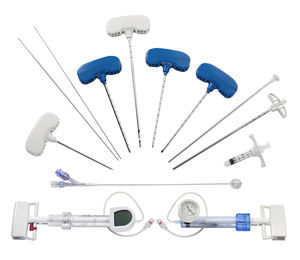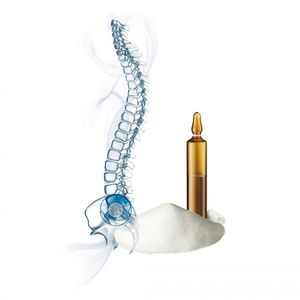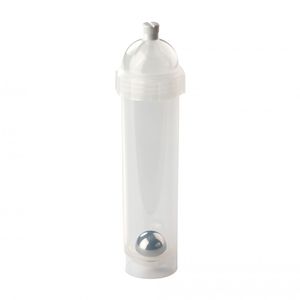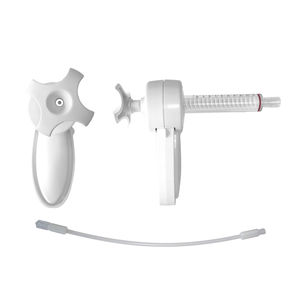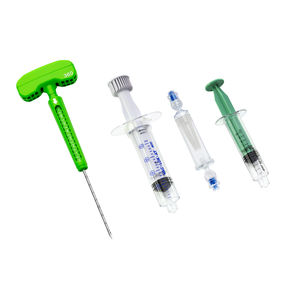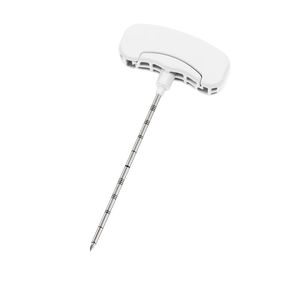
- Medical Consumables
- Healthcare and diagnostic consumables
- Spinal injection needle
- BPB Medica - Biopsybell
Spinal injection needle DISKOM™biopsy19G17G

Add to favorites
Compare this product
Characteristics
- Applications
- spinal injection, biopsy
- Diameter (gauge)
- 19G, 17G
Description
With DISKOM™, pressure on both the spinal cord and nerve roots can be significantly reduced by removing disc herniation through a minimally invasive procedure.
A hernia is a common disorder that occurs when the intervertebral discs nucleus pulposus becomes dislodged from its natural position inside the annulus fibrosus. Most annulus fibrosus lesions are the result of repeated microtraumas or a major trauma that degenerates to allow the nucleus pulposus to bulge and compress the spinal cord or a nerve, causing pain in the back and in the legs. When conservative treatment fails and symptoms persist or worsen, surgical treatment is considered.
Using DISKOM™, spine specialists can reduce pressure on the nerve root by removing disc nucleus with a totally percutaneous procedure, which is minimally invasive.
DISKOM™ is made up of two elements: an access needle with both distal and side openings, and a titanium choclear tip for the mechanical removal of the nucleous polpous. The great advantage of this device is that the cochlea is tightly connected, so it is almost impossible for it to detach: this is an advantage that is surely a unique feature of this system.
SURGICAL TECHNIQUE
Introduce the access needle under fluoroscopy into the disc.
Remove the stylet and introduce the probe into the cannula.
Lock the probe to the access needle through the Luer-lock connection.
Switch the probe on.
Carry out a continuum movement in an anteroposterior direction, for 2/3 minutes. Alternatively, proceed with a rotary movement.
Disc material is then removed and collected along the probe stylet or into the collection chamber.
After switching off, remove the device.
VIDEO
Catalogs
No catalogs are available for this product.
See all of BPB Medica - Biopsybell‘s catalogs*Prices are pre-tax. They exclude delivery charges and customs duties and do not include additional charges for installation or activation options. Prices are indicative only and may vary by country, with changes to the cost of raw materials and exchange rates.


